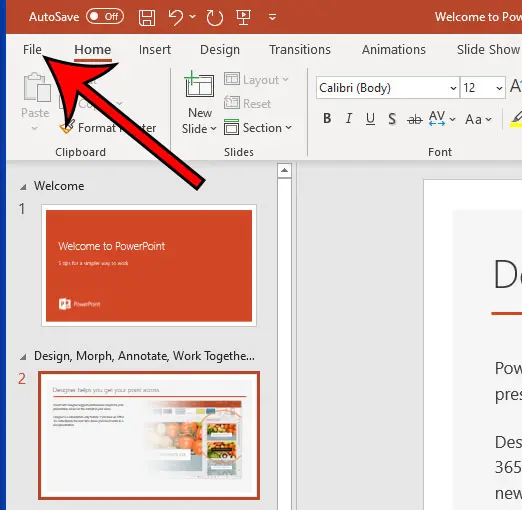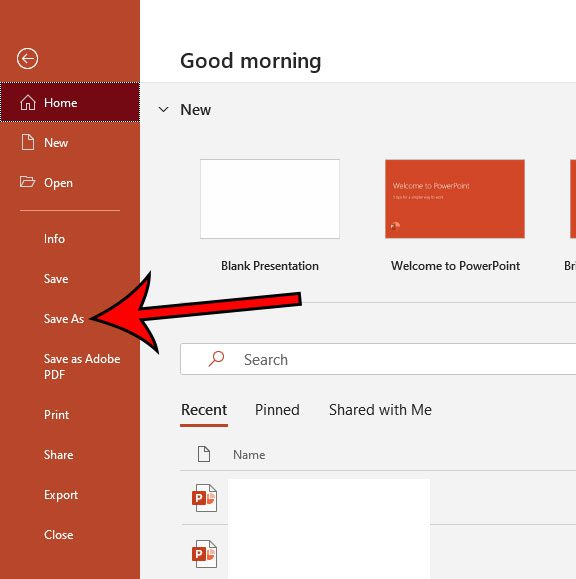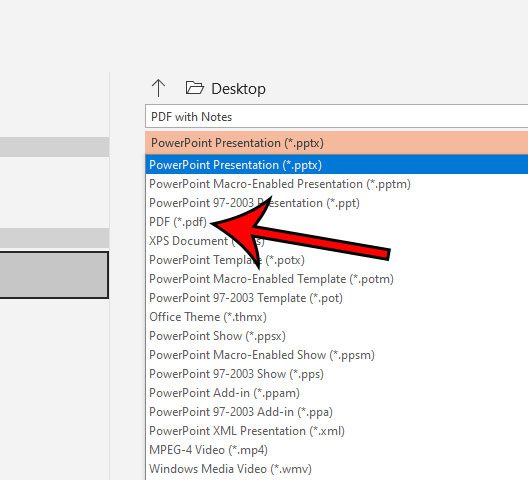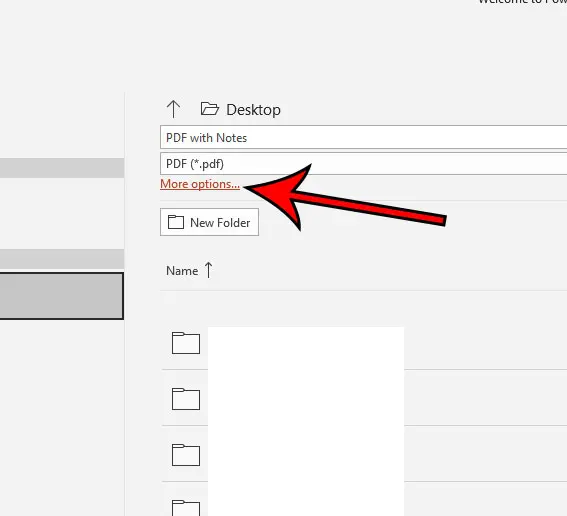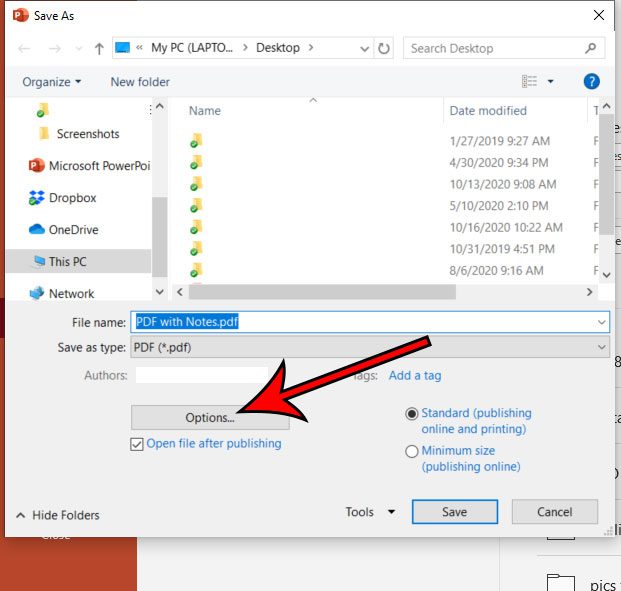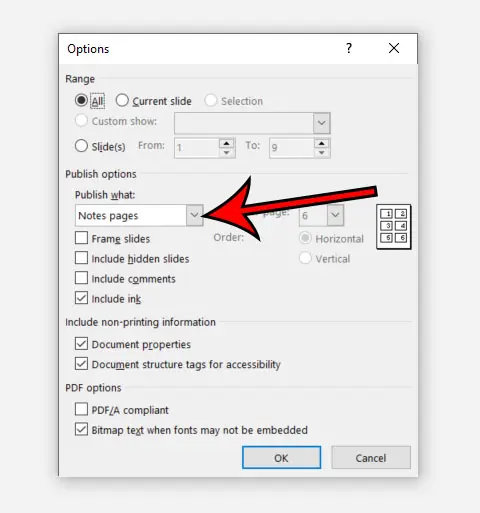You might have already tried printing a Powerpoint slideshow as a PDF, but it’s possible that you need to include the speaker notes as well. Fortunately, you can do this by changing a setting in Powerpoint. Our guide below will show you how to save Powerpoint as PDF with notes.
How to Save PPT as PDF With Notes
Our article continues below with additional information on how to convert PPT files to a PDF document and pictures for these steps. When you create a Powerpoint file you have the ability to add speaker notes to your slides. These notes can be useful to you when you are presenting your slideshow, or they can be beneficial to others with whom you share a copy of the presentation file. Powerpoint has a couple of different ways that you can save or print your presentation. Among these options is the ability to save it as a PDF. But when you elect to save as a PDF, the default option won’t include any speaker notes that you have added to your slides. Fortunately you can make some changes to the settings for the PDF, and one of those changes will let you save the PDF as “Notes pages,” which will include your speaker notes under the slide. Our guide below shows you how to save a Powerpoint as a PDF with notes. Do you have a Powerpoint file that you would like to edit with Slides? Our tutorial on how to convert Powerpoint to Google Slides can show you how to do this.
How to Save a Powerpoint Slideshow as a PDF with Notes (Guide with Pictures)
The steps in this article were performed in the Microsoft Powerpoint for Office 365 version of the application. Note that when you create PDF files of your Powerpoint presentations it won’t affect the original Powerpoint file. It will just convert PDF files that are copies of the slideshow.
Step 1: Open your Powerpoint presentation.
Step 2: Click File at the top-left of the window.
Step 3: Choose the Save As tab at the left side of the window.
Step 4:Click inside the File name field and enter a name for the PDF, then click the drop down menu below it and choose PDF.
Step 5: Select the More options link under the file type.
Step 6: Click Options at the bottom of the save window.
Step 7: Choose the Publish what dropdown menu and select Notes pages, then click OK.
Step 8: Click the Save button.
Our tutorial continues below with additional discussion about how to convert a PPT file to the PDF format.
More Information on How to Create an Adobe PDF Version of a Microsoft Office Powerpoint File
Powerpoint will then generate the PDF and save it to the location you previously selected. You can then open that file and see that each page has one slide from the presentation, and any notes for that slide are included below it. Google Slides is another option for creating, editing, or giving a presentation. It’s also a free application, so it’s worth looking into if you have a Google Account and want to try another alternative to slideshow creation aside from the Microsoft option. Note that you will need an application that can edit PDFs if you want to make changes to that file. Otherwise you will need to make the changes in Powerpoint then regenerate another PDF. The Options dialog box that opens when you select Save to crate PDFs of your presentations includes a number of different non printing information and publish options that you may need for other formats of your slideshow. This includes things like:
Document propertiesDocument structure tags for accessibilityPDF/A complianceBitmap text when fonts may not be embedded
Our tutorial continues below with questions that you may have about how to save Powerpoint as PDF with notes.
See also
How to create a check mark in PowerpointHow to make curved text in PowerpointHow to make a Powerpoint slide verticalHow to remove an animation from PowerpointHow to set a picture as a background in Powerpoint
After receiving his Bachelor’s and Master’s degrees in Computer Science he spent several years working in IT management for small businesses. However, he now works full time writing content online and creating websites. His main writing topics include iPhones, Microsoft Office, Google Apps, Android, and Photoshop, but he has also written about many other tech topics as well. Read his full bio here.
You may opt out at any time. Read our Privacy Policy
